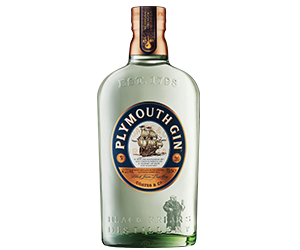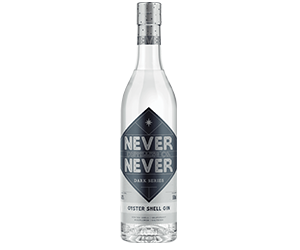Trish Brew.
GINSIDER
Brand Ambassador for Fever-Tree
With almost two decades of hospitality under her belt, Trish Brew, Brand Ambassador for Fever-Tree Australia, has racked up a slew of industry awards including Time Out’s Melbourne Bartender of the Year, Bartender Magazine’s Bar Manager of the Year, and the Australian Liquor Industry Awards’ Brand Ambassador of the Year. We sat down with this Ginsider to get the lowdown on what makes gin so special.
How were you introduced to gin?
I was introduced via a G&T at my first bar gig, circa 2009. I thought it was revolting and later found out it was the post-mix tonic that disagreed with my palate – and not, in fact, the gin! Once I discovered the gins I liked, it became all about classic cocktails. Good gin is so versatile.
What makes gin such a special spirit for you?
Running the Melbourne Gin Palace before the gin boom took off in 2011 and attempting to peddle gin – when practically nobody drank it – was a hard graft! At the time it was all about vodka and whisky, and the occasional Hendricks with cucumber but served with soda “NOT TONIC!”
After many conversations with customers trying to sway them towards gin, I would frequently hear the same phrases: “It’s an old lady’s drink” or “Gin is a depressant.” The view of the category was far from cool. Digging deeper, it turned out many customers didn’t like how bitter it was, and of course they were talking about the tonic not the gin.
Luckily, Fever-Tree was emerging in Australia, which was a game-changer for the gin category. Punters could now drink a G&T that tasted great, and their introduction to gin became a delicious affair rather than a cringeworthy one.
How do you drink your gin?
With tonic, of course! There is a science behind why the G&T works so well. Quinine (the bitter flavour in tonic) is attracted to alpha pinene (a compound in juniper) forming an aggregate, so the combination is more delicious than the sum of its parts. How romantic! I match my tonic to my gin. If it’s a floral gin, the Fever-Tree Elderflower Tonic is divine. If the gin is herbaceous or bursting with native botanicals, the Mediterranean Tonic is delish. For your classic styles of gin, the Indian Tonic is powerfully cooperative.
What are some of the new gins you’ve been trying lately?
There are many distilleries experimenting with flavoured gins, and some are absolutely nailing it. A standout from a recent gin tasting was the Threefold Christmas Cherry Gin, which was unfortunately a limited run but truly divine.
What’s your most memorable gin experience?
I am lucky enough to have visited more than 100 distilleries around the world, and one of the most lavish trips was to Monkey 47 distillery in the Black Forest of Germany. It was the trip of a lifetime, and the gin is truly spectacular! We made black forest cake in the Black Forest drinking Monkey 47 G&Ts – with Fever-Tree Mediterranean Tonic, of course.
What are your three desert island gins?


Well, that depends on what mixers are available on the island. The first two that spring to mind are:
Plymouth Gin – dry with a twist is my favorite martini of all time.
Never Never Oyster Dark Series Shell Gin – this one disappears the fastest in my house, where it’s always G&T o’clock!
So many more choices for the third one – can I have 10 desert island gins?
What have you noticed about the gin landscape in Australia recently?
The category has reached its peak, with many decerning gin drinkers having bigger collections than most bars. Though there seems to be an endless number of flavours to utilise in gin production, we have drifted a little too far from the classic style and have entered more of the ‘flavoured vodka’ realm. I predict this is where the pendulum will start to swing back the other way, towards the more versatile, classic-style dry gins that are made well and taste great.
What do you like about Gin Society?
Gin Society does some serious research and delivers a premium service that takes the guesswork out of such a heavily diluted category. Perfect for gin afficionados and novices alike!

